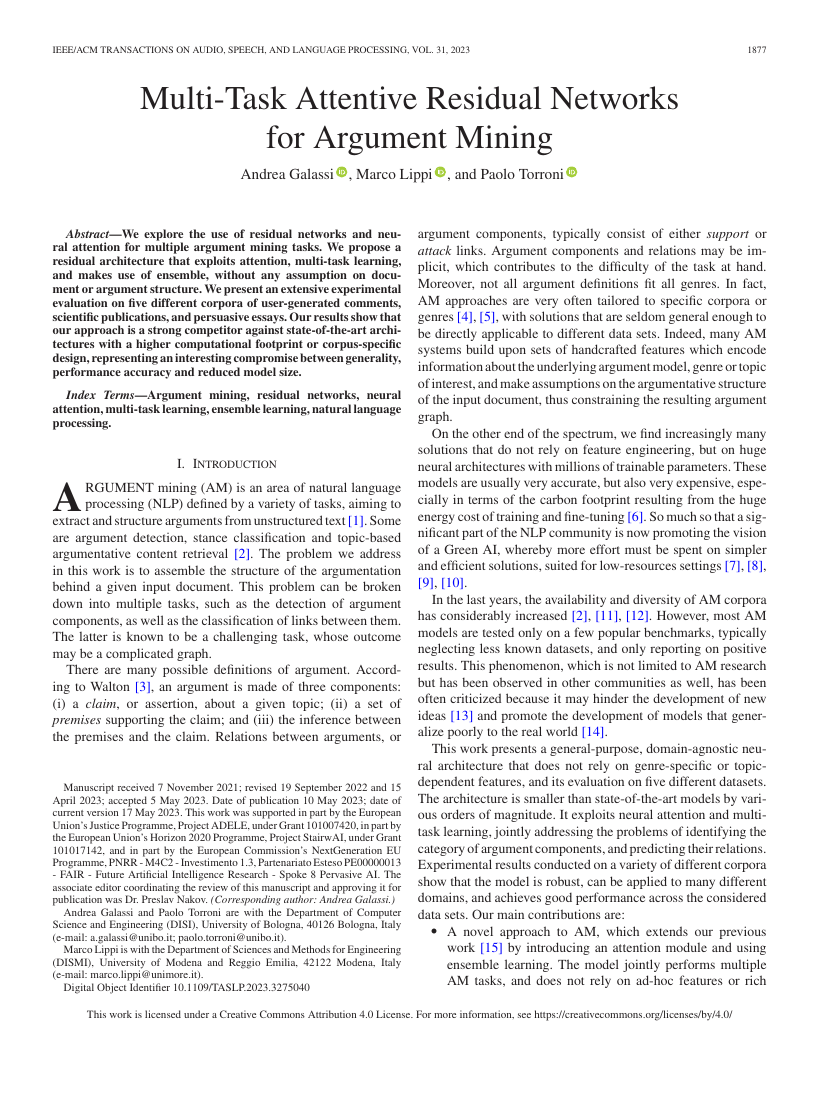Command Palette
Search for a command to run...
Andrea Galassi; Marco Lippi; Paolo Torroni

Abstract
We explore the use of residual networks and neural attention for multiple argument mining tasks. We propose a residual architecture that exploits attention, multi-task learning, and makes use of ensemble, without any assumption on document or argument structure. We present an extensive experimental evaluation on five different corpora of user-generated comments, scientific publications, and persuasive essays. Our results show that our approach is a strong competitor against state-of-the-art architectures with a higher computational footprint or corpus-specific design, representing an interesting compromise between generality, performance accuracy and reduced model size.
Code Repositories
Benchmarks
| Benchmark | Methodology | Metrics |
|---|---|---|
| component-classification-on-cdcp | ResAttArg | Macro F1: 78.71 |
| link-prediction-on-abstrct-neoplasm | ResAttArg | F1: 54.43 |
| link-prediction-on-cdcp | ResAttArg | F1: 29.73 |
| link-prediction-on-dr-inventor | ResAttArg | F1: 43.66 |
| relation-classification-on-abstrct-neoplasm | ResAttArg | Macro F1: 70.92 |
| relation-classification-on-cdcp | ResAttArg | Macro F1: 42.95 |
| relation-classification-on-dr-inventor | ResAttArg | Macro F1: 37.72 |
Build AI with AI
From idea to launch — accelerate your AI development with free AI co-coding, out-of-the-box environment and best price of GPUs.